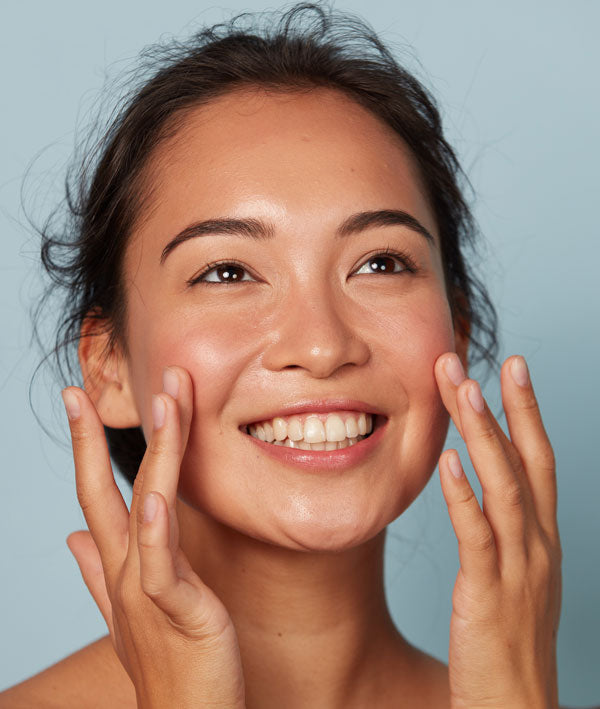In the world of skincare, understanding your unique skin type and needs is crucial for effective treatment and achieving a radiant complexion. One method gaining popularity for its personalized approach is face mapping—a technique that identifies skin issues based on different facial zones. This article will guide you through the basics of face mapping, how to analyze your skin, and how to incorporate these powerful serums to optimize your skincare routine.
What is Face Mapping?
Face mapping is a practice rooted in ancient Chinese and Ayurvedic traditions that correlates specific areas of the face with different internal organs and underlying health conditions. In modern skincare, it’s used to assess how lifestyle, environmental factors, and individual skin types manifest across various facial zones. By interpreting these zones, you can address specific issues like dryness, pigmentation, acne, and fine lines with a targeted regimen.
Understanding face mapping allows you to approach skincare with a holistic perspective, treating skin concerns not just by symptoms, but by their root causes. Let’s explore how to assess each facial zone and identify the right products for optimal skin health.
The Zones of Face Mapping and Their Significance
Face mapping divides the face into several key zones, each believed to reflect different aspects of physical and emotional health. Here’s a breakdown of the zones and what they typically indicate:
1. Forehead - Digestion and Stress
The forehead is often linked to the digestive system and stress levels. Breakouts or dryness in this area might signal poor digestion, high stress, or lack of sleep.
- Recommendation: Use lightweight, hydrating products here to prevent excess oil production due to stress. A Hyaluronic Acid Serum can provide a moisture boost without clogging pores, making it ideal for forehead care.
2. T-Zone (Forehead, Nose, and Chin) - Oil Production and Hormones
The T-zone, which covers the forehead, nose, and chin, tends to be more oily due to a higher concentration of sebaceous (oil) glands. Issues in this area often correlate with hormonal fluctuations and oil production, leading to breakouts or excess shine.
- Recommendation: Balance oil and hydrate your skin with a Hyaluronic Acid Serum that won't clog pores. This serum can help balance the skin's moisture levels, providing hydration without adding oil.
3. Under-Eye Area - Kidneys and Hydration
The delicate skin around the eyes can reveal signs of dehydration, stress, and even poor kidney function. Dark circles and puffiness may also result from lack of sleep or hydration.
- Recommendation: Look for products that offer deep hydration and support collagen, such as Vitamin C Serum. Vitamin C is known for its brightening and firming effects, which can help minimize the appearance of dark circles and keep the under-eye area looking refreshed.
4. Cheeks - Lungs and Pollution
The cheeks often reflect lung health and can be affected by external factors like pollution, smoking, or allergies. Additionally, touching your face frequently or using dirty makeup tools can lead to breakouts or irritation in this area.
- Recommendation: Apply an antioxidant-rich Vitamin C Serum on the cheeks to protect against environmental pollutants. Vitamin C can help reduce redness and protect the skin from free radicals, giving the cheeks a brighter, more even appearance.
5. Chin and Jawline - Hormones and Diet
The chin and jawline are commonly affected by hormonal imbalances and dietary factors, which can lead to cystic acne and persistent breakouts. This area can also be influenced by dairy and high-sugar foods, which are known to exacerbate acne.
- Recommendation: Keep the area clean and apply a calming serum like Hyaluronic Acid Serum to provide hydration without irritation. For more intense breakouts, consider products with salicylic acid or tea tree oil in addition to your hydrating routine.
Analyzing Your Skin Using Face Mapping
Now that you understand the zones of face mapping, let’s go over how to analyze your skin. Use the following steps to observe patterns in each area and make informed skincare decisions.
-
Start with a Clean Face: Wash your face with a gentle cleanser and pat it dry. Avoid using any skincare products before analyzing to see your skin in its natural state.
-
Observe Each Zone: Stand in front of a mirror in natural light, and look closely at each area of your face. Take note of redness, breakouts, dryness, oiliness, or uneven texture.
-
Identify Patterns: Determine if there are specific concerns in certain zones. Do you often get breakouts along the jawline? Is the skin on your cheeks red or irritated? Recognizing these patterns can give insight into lifestyle factors and skincare needs.
-
Assess Lifestyle Factors: Think about your diet, sleep, stress levels, and environment. For example, if you often break out on your forehead and nose, high stress levels might be a contributing factor. Adjusting lifestyle habits alongside skincare can amplify your results.
-
Choose Targeted Products: Based on your observations, pick products that specifically address your concerns in each zone. For example, use Vitamin C Serum on areas needing brightening or antioxidant protection, and Hyaluronic Acid Serum where you need extra hydration.
How to Incorporate Hyaluronic Acid and Vitamin C Serums in Your Routine
After analyzing your skin through face mapping, it’s time to incorporate the right serums to target your unique needs.
Using Hyaluronic Acid Serum
Hyaluronic Acid is a hydration powerhouse that can hold up to 1,000 times its weight in water. It’s especially beneficial for zones experiencing dryness, such as the forehead, under-eye area, and chin.
- When to Apply: Use after cleansing and toning, while the skin is slightly damp. Hyaluronic Acid Serum works best in a humid environment, so applying it to damp skin can boost its hydrating effects.
- Best For: Areas prone to dryness, tightness, or fine lines. This serum is also lightweight, making it suitable for oily-prone areas like the T-zone without causing breakouts.
Using Vitamin C Serum
Vitamin C is an antioxidant that brightens skin, fights free radical damage, and supports collagen production. It’s ideal for zones exposed to pollutants or showing signs of dullness, such as the cheeks and under-eye area.
- When to Apply: Use in the morning after cleansing and before sunscreen. Vitamin C provides extra protection against sun damage, so combining it with SPF is a powerful duo.
- Best For: Dull, uneven areas, pigmentation, and redness. Vitamin C Serum helps to brighten and even out skin tone, making it perfect for the cheeks and any areas with discoloration.
Final Tips for Face Mapping and Skincare Success
-
Consistency is Key: Results from face mapping and targeted treatments take time. Stick to your regimen for at least four weeks to see noticeable improvements.
-
Adjust with the Seasons: Your skin’s needs may vary with the seasons. For example, in winter, you might need extra hydration, while in summer, your T-zone may require more oil control.
-
Stay Hydrated and Rested: Hydration and rest play a huge role in skin health. Drink plenty of water, manage stress, and aim for 7-8 hours of sleep for a glowing complexion.
-
Review Regularly: Reassess your face mapping analysis every few months. As lifestyle and environmental factors shift, so do your skin’s needs.
Face mapping is an empowering approach to skincare that enables you to address your unique skin issues in each area of your face. By listening to your skin’s needs, you’re one step closer to a glowing, balanced complexion.







